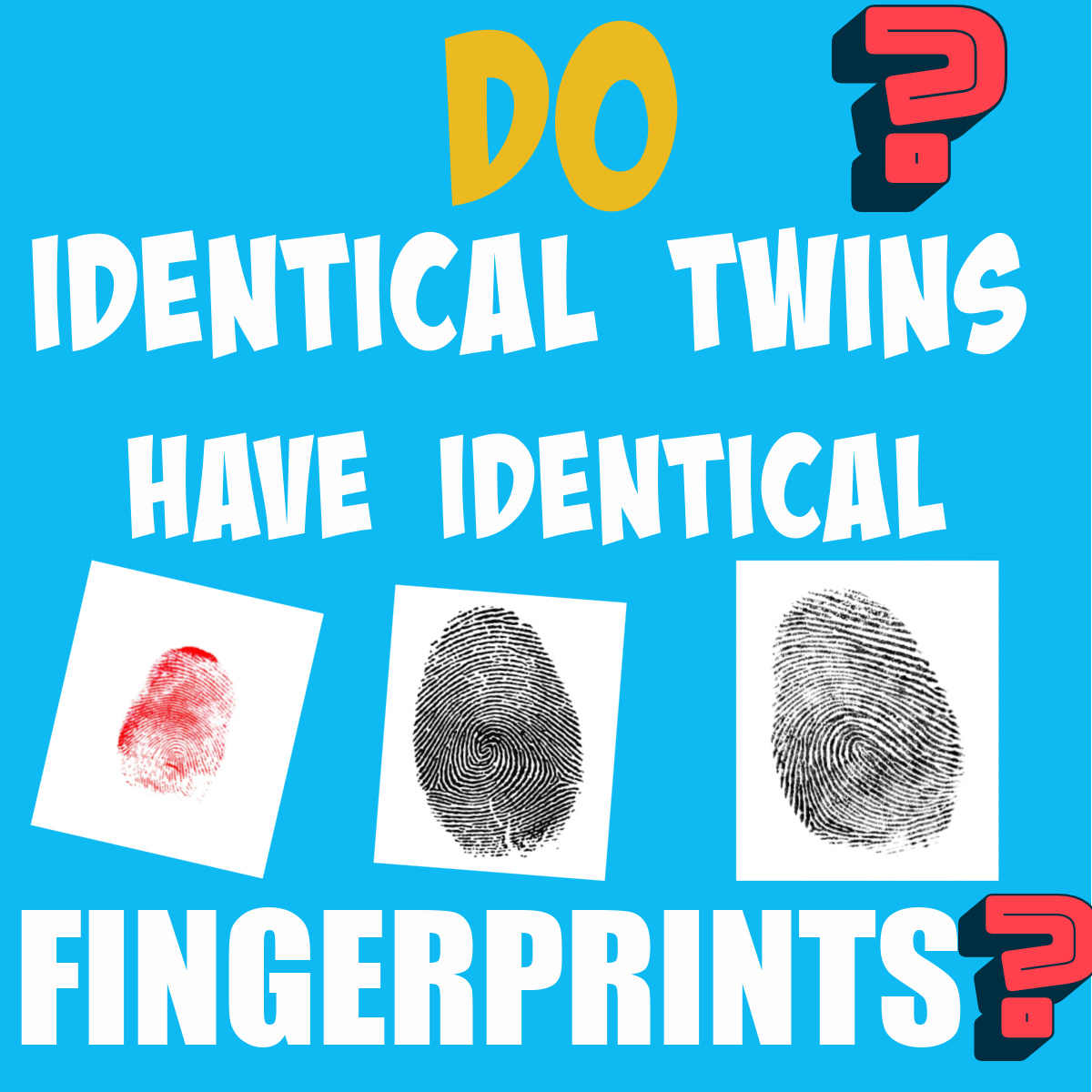
One of the most common questions asked about twins is whether they have the same fingerprints. It's a question that has fascinated people for many years, and the answer might surprise you.
What Are Fingerprints?

Fingerprints are unique patterns of ridges and valleys on the skin of the fingers and thumbs. They are formed during fetal development and remain unchanged throughout a person's life. Fingerprints are used as a means of identification because no two fingerprints are alike.
Are Twins' Fingerprints Identical?

The short answer is no, twins do not have identical fingerprints. While twins share many similarities due to their identical genetic makeup, their fingerprints are not one of them.
Why Aren't Twins' Fingerprints Identical?
Fingerprints are not solely determined by genetics. They are also influenced by environmental factors such as pressure, movement, and position in the womb. Even though twins share the same genes, they are not exposed to the exact same conditions in the womb. As a result, their fingerprints develop differently.
Can Twins Have Similar Fingerprints?

While twins don't have identical fingerprints, they can have very similar ones. This is because their genetics play a large role in determining the overall pattern of their fingerprints. However, even if their fingerprints look similar, they can still be distinguished from each other using more detailed analysis.
What Makes Fingerprints Unique?

Fingerprints are unique because they are formed by a combination of genetic and environmental factors. The ridges and valleys on the skin of our fingers and thumbs are influenced by pressure from the developing fetus, as well as the fluctuations in blood flow that occur during fetal development. These factors create unique patterns that are impossible to replicate.
How Do Fingerprints Help Solve Crimes?

Fingerprints are an important tool in solving crimes because they are unique to each person. When a suspect touches an object, they leave behind a trace of their fingerprints. Forensic experts can then compare these fingerprints to a database of known prints to identify the suspect.
Can Fingerprints Change Over Time?

Fingerprints are generally considered to be unchanging throughout a person's life. However, there are some rare cases where fingerprints can change due to injury or disease. For example, burns or cuts to the skin can alter the pattern of ridges and valleys, making it difficult to identify a person using their fingerprints.
How Accurate Are Fingerprint Identification Systems?
:max_bytes(150000):strip_icc()/fingerprints-56a68a1c3df78cf7728ee060.jpg)
Fingerprint identification systems are considered to be one of the most accurate methods of identifying people. The chances of two people having the same fingerprints are estimated to be one in 64 billion. However, it's important to note that no identification system is foolproof, and mistakes can still be made.
What Are the Different Types of Fingerprints?

There are three main types of fingerprints: arches, loops, and whorls. Arches are the least common type and have a simple, flowing pattern. Loops are the most common type and have a distinctive loop shape. Whorls have a circular or spiral pattern and are the second most common type.
Conclusion
While twins don't have identical fingerprints, they can still have very similar ones. Fingerprints are unique to each person and are used as a means of identification because of their individuality. Fingerprints are formed by a combination of genetic and environmental factors, and while they are generally considered to be unchanging throughout a person's life, there are some rare cases where they can change. Overall, fingerprints are an important tool in solving crimes and identifying people.